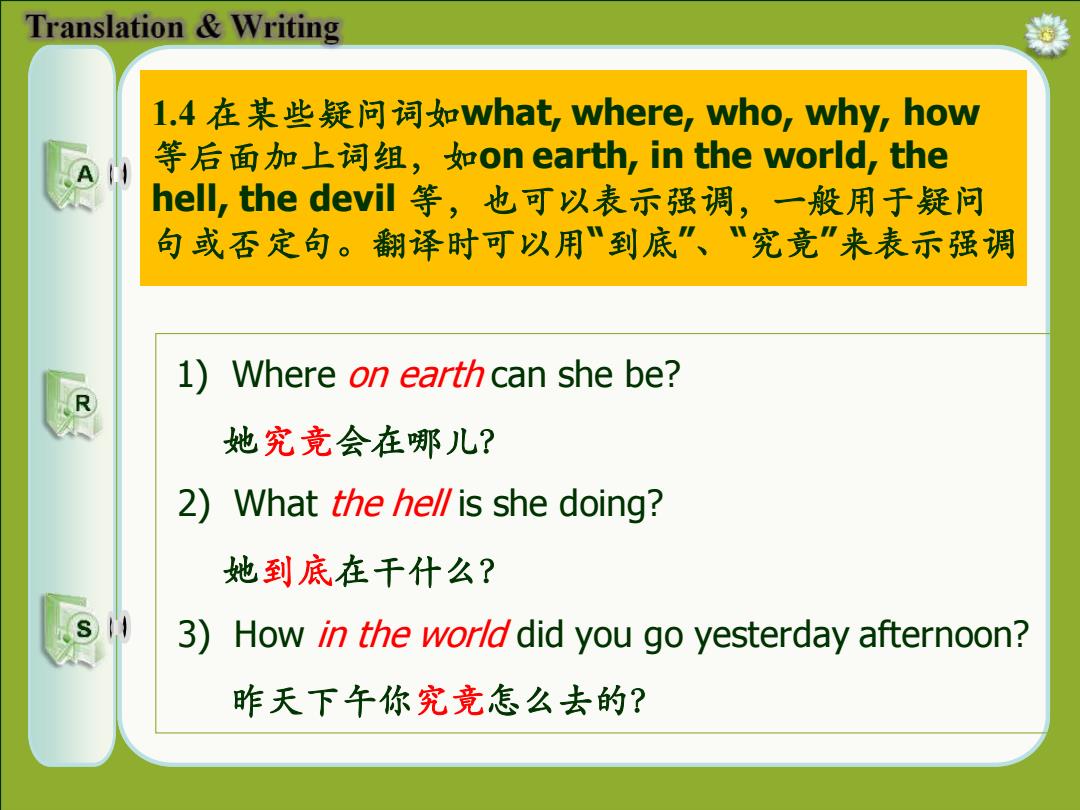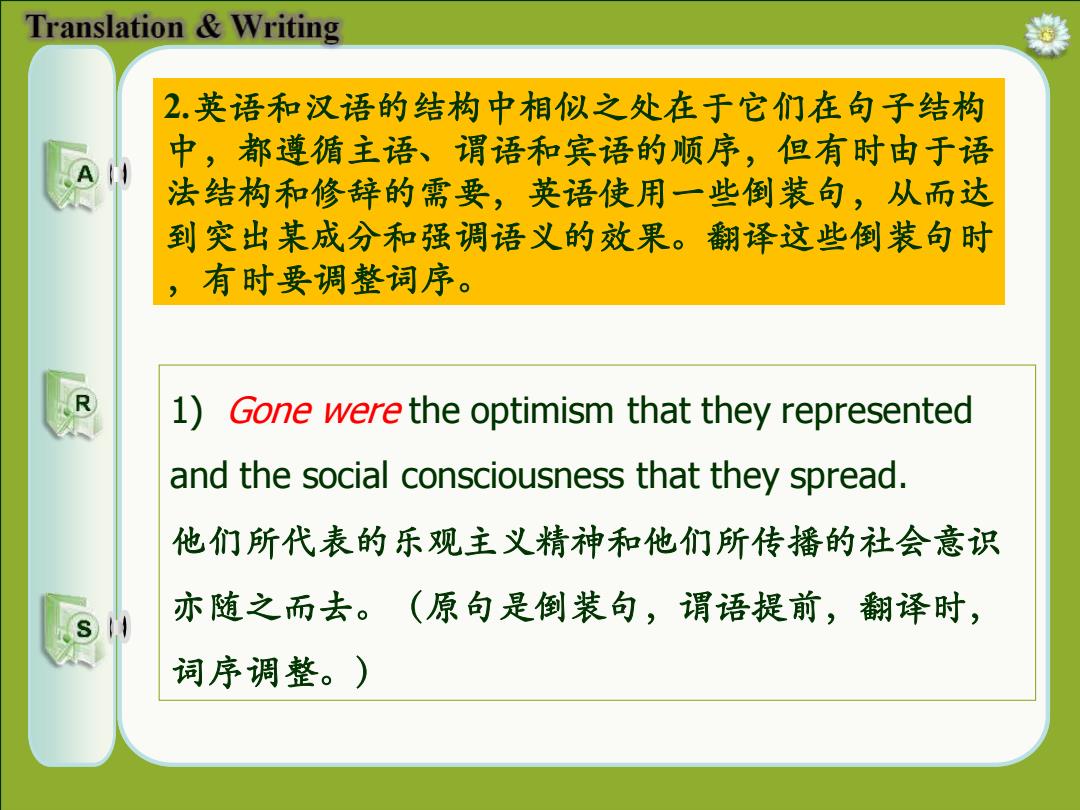
Translation Writing 1.4在某些疑问词如what,where,who,why,hoW 等后面加上词组,如on earth,in the world,he hel,the devil等,也可以表示强调,一般用于疑问 句或否定句。翻译时可以用"到底”、“究竞”来表示强调 1)Where on earth can she be? 她究竟会在哪儿? 2)What the hell is she doing? 她到底在干什么? 3)How in the world did you go yesterday afternoon? 昨天下午你究竞怎么去的?
1.4 在某些疑问词如what, where, who, why, how 等后面加上词组,如on earth, in the world, the hell, the devil 等,也可以表示强调,一般用于疑问 句或否定句。翻译时可以用“到底” 、 “究竟”来表示强调 1) Where on earth can she be? 她究竟会在哪儿? 2) What the hell is she doing? 她到底在干什么? 3) How in the world did you go yesterday afternoon? 昨天下午你究竟怎么去的?

Translation Writing 2.英语和汉语的结构中相似之处在于它们在句子结构 中,都遵循主语、谓语和宾语的顺序,但有时由于语 法结构和修锌的需要,英语使用一些倒装句,从而达 到突出某成分和强调语义的效果。翻译这些倒装句时 ,有时要调整词序。 1)Gone were the optimism that they represented and the social consciousness that they spread. 他们所代表的乐观主义精神和他们所传播的社会意识 亦随之而去。(原句是倒装句,谓语提前,翻译时, 词序调整。)
1) Gone were the optimism that they represented and the social consciousness that they spread. 他们所代表的乐观主义精神和他们所传播的社会意识 亦随之而去。(原句是倒装句,谓语提前,翻译时, 词序调整。) 2.英语和汉语的结构中相似之处在于它们在句子结构 中,都遵循主语、谓语和宾语的顺序,但有时由于语 法结构和修辞的需要,英语使用一些倒装句,从而达 到突出某成分和强调语义的效果。翻译这些倒装句时 ,有时要调整词序